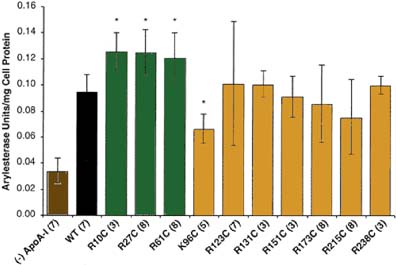Apolipoprotein A-1 Variants for Reducing Cardiovascular-Related Risks
Single dose drug therapy for preventing restenosis and reducing the effects of acute phase responseADVANTAGES:
- Promises to help prevent restenosis and thereby reduce the frequency of repeated invasive procedures to clear arterial blockages - Potentially inhibits the harmful oxidative effects of acute phase response - Increases paraoxonase activity by up to 30%
ABSTRACT:
Trudy Forte and Michael Oda have developed functional apolipoprotein A-1 (apoA-1) mutant proteins and their encoding polynucleotides that increase the anti-oxidating activity of paraoxonase (PON) by as much as 30% compared to the effect of naturally occurring apoA-1. A single post-operative dose of a drug based on the Berkeley Lab apoA-1 variants could reduce the probability of restenosis and alleviate the harmful oxidative effects of acute phase response, thereby reducing the frequency of repeated invasive procedures.
According to the American Heart Association, in 10-20% of the patients who undergo balloon angioplasty, the affected portion of the artery reverts to its occluded state within six months. This condition, restenosis, is usually initiated during the acute phase response, which occurs immediately following the angioplasty or stent procedure.
Patients who exhibit restenosis are generally treated with a second balloon angioplasty and/or stent implementation procedure. Sometimes the only option is coronary bypass surgery. The Berkeley Lab apoA-1 protein variants make feasible the preparation and administration, either orally or intravenously, of therapies that could reduce the risk of restenosis and the effects of acute phase response.
The Berkeley Lab researchers modified the natural form of the DNA encoding human apoA-1 to introduce a series of restriction sites. These restriction sites facilitated the creation of three unique mutation forms of apoA-I which contain a cysteine substitution at amino acid positions 10, 27 and 61, respectively. These cysteine substitutions are correlated with a significant increase in PON’s anti-oxidating activity. Indications are that the cysteine on apoA-1 serves to enhance the efficiency of PON’s enzymatic activity but does not increase the amount of the enzyme. HDL bearing multiple apoA-1 mutant proteins may possess further elevated PON activity.
Attached files:

Inventor(s): Trudy Forte and Michael Oda
Type of Offer: Licensing
« More Biotech Patents
